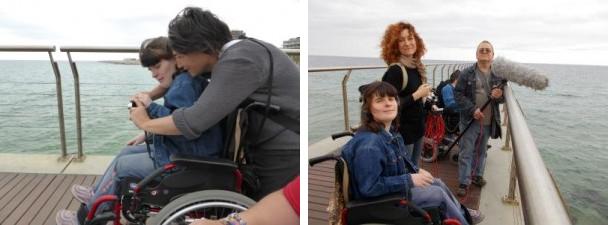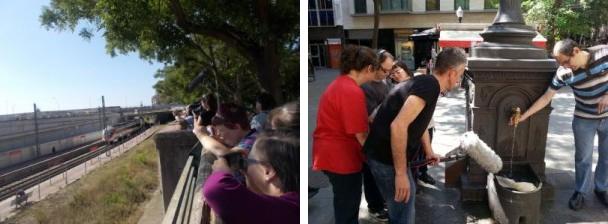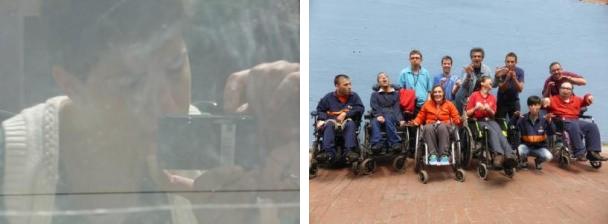The exhibition I work the street. Joan Colom, photographs 1957-2010 has been an incentive for a group of youths and, furthermore, 11 centers that attend people with cognitive and physical disabilities, to develop a series of different photographic projects that have in common the fact of taking a close look at their most immediate urban surroundings.
Our Ravalpresents the photographic works of 25 youths between 13 and 17 years old carried out within the context of the temporary exhibition Joan Colom. The images produced by these youths, accompanied by the photographer Mònica Rosselló, take us right into the Raval through their own personal look and show us the everyday life of their neighbourhood. Independently of the photographic results, which are of unquestionable quality, what this initiative highlights is the interest of the youths in the artistic practice that, carried in the context of the museum, transforms it into an open space that enables the socialization of youths from different backgrounds, providing visibility to their creative expression and turns it into a field of experimentation of this shared construction. The exhibition is open until 28th September.
Here we present some images of the making of with some comments by the youths who took part:
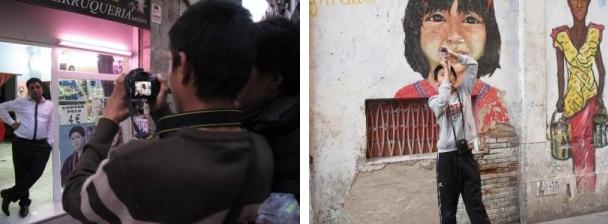
“We are learning to look at our surroundings with new eyes, it seems incredible that we can still discover things in our neighbourhood, in the streets we walk down each day!”

“We’ve been to the museum to visit the photographic exhibition of Joan Colom and to see the room of the museum where we will be exhibiting. […] there are lots of possibilities for starting to activate our creativity. How will we do it? We’ve got lots of things to decide!”

“With Mònica in the Institute, commenting on our photos, we have started thinking how we want to do the exhibition. She has brought us a model of the room of the musuem where we will be exhibiting to try things out.”

“Once again in the museum we have seen how the photographs have turned out. Afterwards, with Mònica, we decided how we will put them on the space of wall we have.”

“Prior to the inauguration, the authors were able to talk with the curators of the exhibition “I work the street” dedicated to Joan Colom, David Balsell and Jorge Ribalta, […] and they were able to explain to them how they created the projects…”

“The exhibition room was filled with girls and boys, families, photographers, teachers…who were able to see the photographs exhibited.”
Audio-visual maps of the city is the second initiative that has included the exhibition about the photographer Joan Colom as a reference. The exhibition has been the starting point for 265 users and 40 educators from 11 centers who attend people with cognitive and physical disabilities, to carry out a work of reflection and creation about the city, the neighbourhood and the everyday relation of the participants with their most immediate urban surroundings. The project ended with a collection of small audio-visual pieces which were produced based on the putting together of images and sounds that the participants themselves had taken of the spaces and places that are close to them and mean a lot to them. Each of the pieces shows us their particular visions of the urban environment.
Accompanied by the educators from the centres and professionals from the world of photography and cinema, Pablo García, Adrià Cillero and the sound engineer Verònica Font, have provided the approach by the participants to some of the expressive resources of photography and sound that they would use in the research and documentation so as to carry out a small process of creation in the urban setting and their uses. The experience allowed them to explore and document singular places from their urban surroundings and, above all, to boost amongst the users an awareness about what surrounds them in a creative way.
Here you have a small collection of the photographs of the making of with some comments by the educators of the centres. The audio-visual pieces will be presented in public at the end of the year and will be available on the website of the museum.
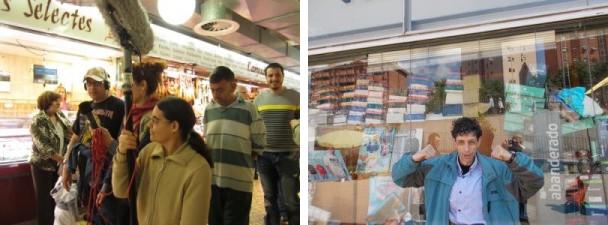
CO La Marina and 1981 Mecànica (Grup ASPROSEAT). “The fact of approaching them to the world of photography in such a close and practical way has been very gratifying for them. They have opened themselves up to discovering other ways of looking, listening and expressing themselves […] At the beginning it was difficult because they were not used to these types of photographs. Afterwards their vision changed and they were very critical with the photos. […] Some of them hadn’t ever picked up a camera and it was very motivating. […] They rediscovered the neighbourhood and they really liked doing so. They decided what to put and what not, the duration, the images, the sound, the text […] which made them really live it as their own project […] Involvement, greater interest, discovery of the world of photography and more than one user had discovered a new hobby. […] When we have done some extraordinary activity, it is they who have been responsible for taking the photographs. They know how to frame them, they give value to the images they want to photograph.
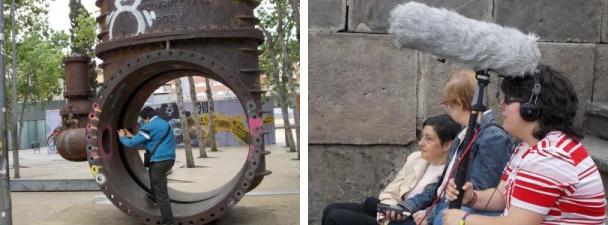
Artesà Foundation. “They have discovered a new way of looking at photography, beyond just looking and taking the photographs, […] they were more concerned with finding a different photo from the ones they are used to taking. […] they knew exactly what they wanted to photograph from the first moment, spaces which were very significant or every day for them. The complex task was to change the “chip” and to take different photos, taking into account the shades, colours, perspectives, details, etc. […] They have learnt to listen and to focus on the sounds they heard in the streets. […] from the very first day they noticed everything they heard even when they were not doing this workshop, for example on other excursions, on the way to the gym, when they went to the centre, etc. […] it was used to build up their awareness of the importance of knowing how to look, see and listen. Many of them came with photographs and sounds they had taken or recorded on the streets with their mobiles, they had the task clearly in their minds during their everyday lives.”
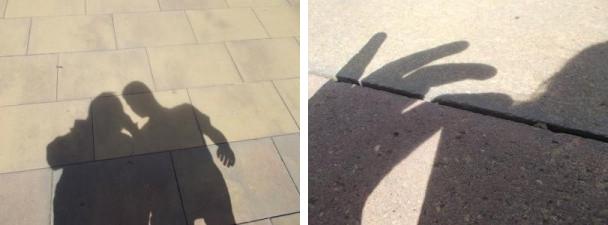
SOI and STO TEB Castellar. “To observe their city more closely, they themselves being the protagonists at the same time as capturing on the camera what caught their attention most, and recording the sounds they heard. […] the participants were able to focus on the different sounds and listen to them after the recording. They found it particularly amusing to listen to their own voices recorded. […] Creativity was encouraged by giving them the space and opportunity to decide and experiment both with the photography and the sound, accepting, collecting and giving validity to what they chose.”
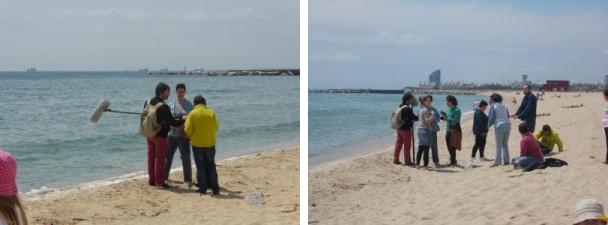
CO Bogatell. “It was a new world to discover, using professional materials from the world of audio and sound.”
These two initiatives have been carried out by the association A Bao a Qu, Mar Morón and the photographers Mònica Rosselló, Pablo García, Adrià Cillero and the sound engineer Verònica Font.
Two projects, two ways of approaching and becoming the protagonists of a creative event.
Related links:
Youths in the museum
Video (29,56 min) of TEBVist about the Project done by the participants themselves.
Departament d’Accessibilitat i Inclusió

